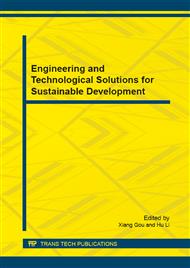p.478
p.484
p.489
p.494
p.498
p.504
p.509
p.514
p.523
Thermodynamic Investigation on SO3 Distribution in Oxy-Fuel Combustion
Abstract:
Thermodynamic equilibrium is proposed to analyze the distribution of SO3 in different flue gas circulation modes to study the migration law of sulfur for oxy-fuel combustion. Results indicate that the concentration of SO2 increases dramatically when flue gas circulation is adopted with the decline of flue gas volume and the increase of oxygen concentration in oxy-fuel combustion, which results the increase of SO3 concentration and formation rate. At 1200°C, thermodynamic equilibrium concentration of SO2 and SO3 are 5.3 times and 6.1 times respectively compared with conventional combustion. In Oxy1 circulation mode, SO3 is the most sensitive to excess air coefficient and sulfur content, followed by Oxy2 circulation mode, while the conventional combustion has the lowest sensitivity. Therefore, SO3 is greatly influenced by different flue gas circulation modes during oxy-fuel combustion.
Info:
Periodical:
Pages:
498-503
Citation:
Online since:
November 2014
Authors:
Price:
Сopyright:
© 2014 Trans Tech Publications Ltd. All Rights Reserved
Share:
Citation:


